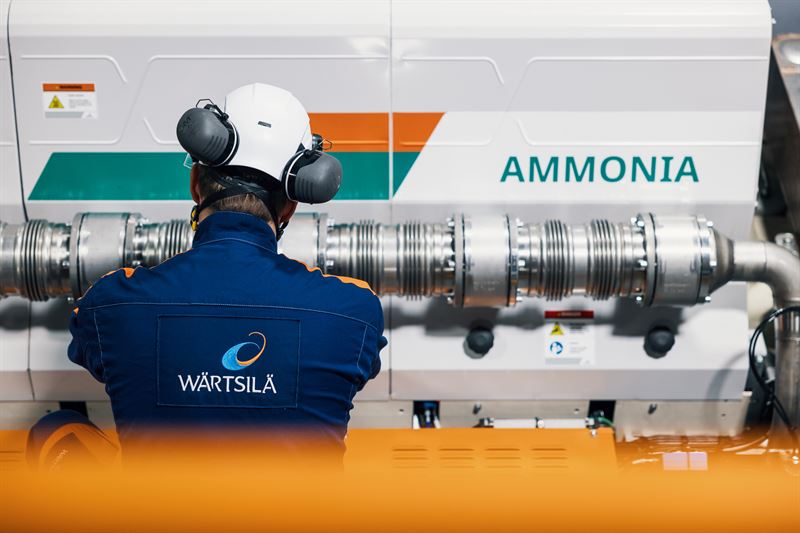Apollo is pleased to welcome the recent performance results published by Wärtsilä on its ammonia-fuelled 4-stroke engine platform. The Wärtsilä 25 engine, which will be integrated into the Apollo project’s flagship demonstration vessel, Viking Energy, has now demonstrated up to 90% greenhouse gas (GHG) emission reductions, based on a 95% ammonia energy share, compared to conventional diesel engines.
These new results mark a significant milestone in the Apollo project’s mission to fast-track the transition to zero-emission shipping. They follow extensive testing carried out by Wärtsilä since the engine’s introduction to the commercial marine sector in late 2023. The tests were conducted using a low-pressure Otto cycle combustion concept—selected for its robust safety profile, high efficiency, and low emissions potential.
Important Breakthrough
“This breakthrough in ammonia engine performance is a major validation of the Apollo project’s approach,” says Emilie Dorgeville, Project Coordinator for Apollo and Project Manager at Maritime CleanTech. “It shows that real-world ammonia operations—at scale—can deliver meaningful climate impact. Apollo brings together leading industry partners to test, validate, and de-risk this technology onboard a commercial vessel. Wärtsilä’s recent results strengthen the foundation for our upcoming demonstration phase and reinforce the value of long-term collaboration across the value chain.”
In addition to the engine itself, the full Apollo ammonia solution includes:
- AmmoniaPac fuel supply system
- WARMS (Wärtsilä Ammonia Release Mitigation System)
- NOx Reducer (NOR) exhaust after-treatment system
Together, these technologies aim to deliver a safe, efficient, and replicable system for ammonia-powered shipping. The enhanced engine performance will be included in Apollo’s test configuration onboard Viking Energy, scheduled to enter ammonia operation in 2026.
Ammonia is increasingly recognized as a critical fuel in the maritime decarbonization pathway, enabling deep emission cuts aligned with IMO’s net-zero by 2050 target. The Apollo project continues to lead the way in proving that this transition is not only possible—but imminent
PHOTO: © Wärtsilä Corporation

